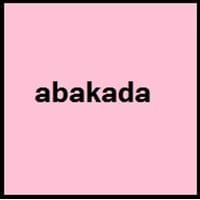Countries
Philippines
Barbados, Belize, Botswana, Cameroon, Canada, Dominica, Fiji, Ghana, India, Ireland, Jamaica, Kenya, Malta, Mauritius, Micronesia, Nigeria, Pakistan, Philippines, Rwanda, Saint Kitts and Nevis, Samoa, Sierra Leone, Singapore, Somaliland, South Africa, South Sudan, Sudan, Tanzania, Trinidad and Tobago, Uganda, United Kingdom, Zambia, Zimbabwe
National Language
Philippines
Anguilla, Antigua and Barbuda, Bahamas, Barbados, Belize, Bermuda, Cayman Islands, Gibraltar, Grenada, Guam, Guyana, Jersey, Montserrat, Nauru, Singapore, Trinidad and Tobago, United Kingdom, United States of America
Second Language
Filipinos
India, Nigeria, Pakistan, Singapore
Speaking Continents
Asia, Australia
Africa, Asia, Australia, Europe, North America, Oceania, South America
Minority Language
Australia, Canada, Guam, Hong Kong, New Zealand, Singapore, United Kingdom
South Africa
Regulated By
Komisyon sa Wikang Filipino, National Languages Committee
Not Available
Interesting Facts
- In 1593, "Doctrina Christiana" was first book written in two versions of Tagalog.
- The name "Tagalog" means "native to" and "river". "Tagalog"is derived from taga ilog, which means "inhabitants of the river".
- Most of the English words begin with the letter S than any other letter.
- English is third most commonly spoken language in the world.
Similar To
Filipino, Cebuano and Spanish Languages
Not Available
Derived From
Not Available
Latin
Alphabets in
Tagalog-Alphabets.jpg#200
English-Alphabets.jpg#200
Writing Direction
Left-To-Right, Horizontal
Left-To-Right, Horizontal
Thank You
Salamat po
Thank you
How Are You?
Kamusta ka na?
How are you?
Good Night
Magandang gabi
Good Night
Good Evening
Magandang gabi po
Good Evening
Good Afternoon
Magandang hapon po
Good Afternoon
Good Morning
Magandang umaga po
Good Morning
Sorry
pinagsisisihan
Sorry
I Love You
Iniibig kita
I love you
Excuse Me
Ipagpaumanhin ninyo ako
Excuse Me
Dialect 1
Batangas Tagalog
American English
Where They Speak
Batangas, Gabon
United States of America
How Many People Speak
Not Available
Dialect 2
Bisalog
Hiberno-English
Where They Speak
Philippines
Republic of Ireland, United Kingdom
How Many People Speak
Not Available
Dialect 3
Filipino
Welsh English
Where They Speak
Philippines
United Kingdom
Native Name
Tagalog
English
Alternative Names
Filipino, Pilipino
Not Available
French Name
tagalog
anglais
German Name
Tagalog
Englisch
Pronunciation
[tɐˈɡaːloɡ]
/ˈɪŋɡlɪʃ/
Ethnicity
Tagalog people
Not Available
Origin
1593
5th Century AD
Language Family
Austronesian Family
Indo-European Family
Subgroup
Indonesian
Not Available
Branch
Not Available
Not Available
Early Forms
Proto-Philippine, Old Tagalog, Classical Tagalog, Tagalog
Old English, Middle English, Early Modern English and English
Standard Forms
Filipino
Standard English
Signed Forms
Not Available
Signed English
Scope
Individual
Individual
ISO 639 6
Not Available
engs
Glottocode
taga1269
stan1293
Linguasphere
31-CKA
52-ABA
Language Type
Living
Living
Language Linguistic Typology
Object-Verb-Subject, Subject-Verb-Object, Verb-Object-Subject, Verb-Subject-Object
Subject-Verb-Object
Language Morphological Typology
Not Available
Analytic, Fusional, Isolating, Synthetic
Tagalog and English Greetings
People around the world use different languages to interact with each other. Even if we cannot communicate fluently in any language, it will always be beneficial to know about some of the common greetings or phrases from that language. This is where Tagalog and English greetings helps you to understand basic phrases in Tagalog and English language. Tagalog word for "Hello" is Kamusta or English word for "Thank You" is Thank you. Find more of such common Tagalog Greetings and English Greetings. These greetings will help you to be more confident when conversing with natives that speak these languages.
Tagalog vs English Difficulty
The Tagalog vs English difficulty level basically depends on the number of Tagalog Alphabets and English Alphabets. Also the number of vowels and consonants in the language plays an important role in deciding the difficulty level of that language. The important points to be considered when we compare Tagalog and English are the origin, speaking countries, language family, different greetings, speaking population of these languages. Want to know in Tagalog and English, which language is harder to learn? Time required to learn Tagalog is 44 weeks while to learn English time required is 6 weeks.





